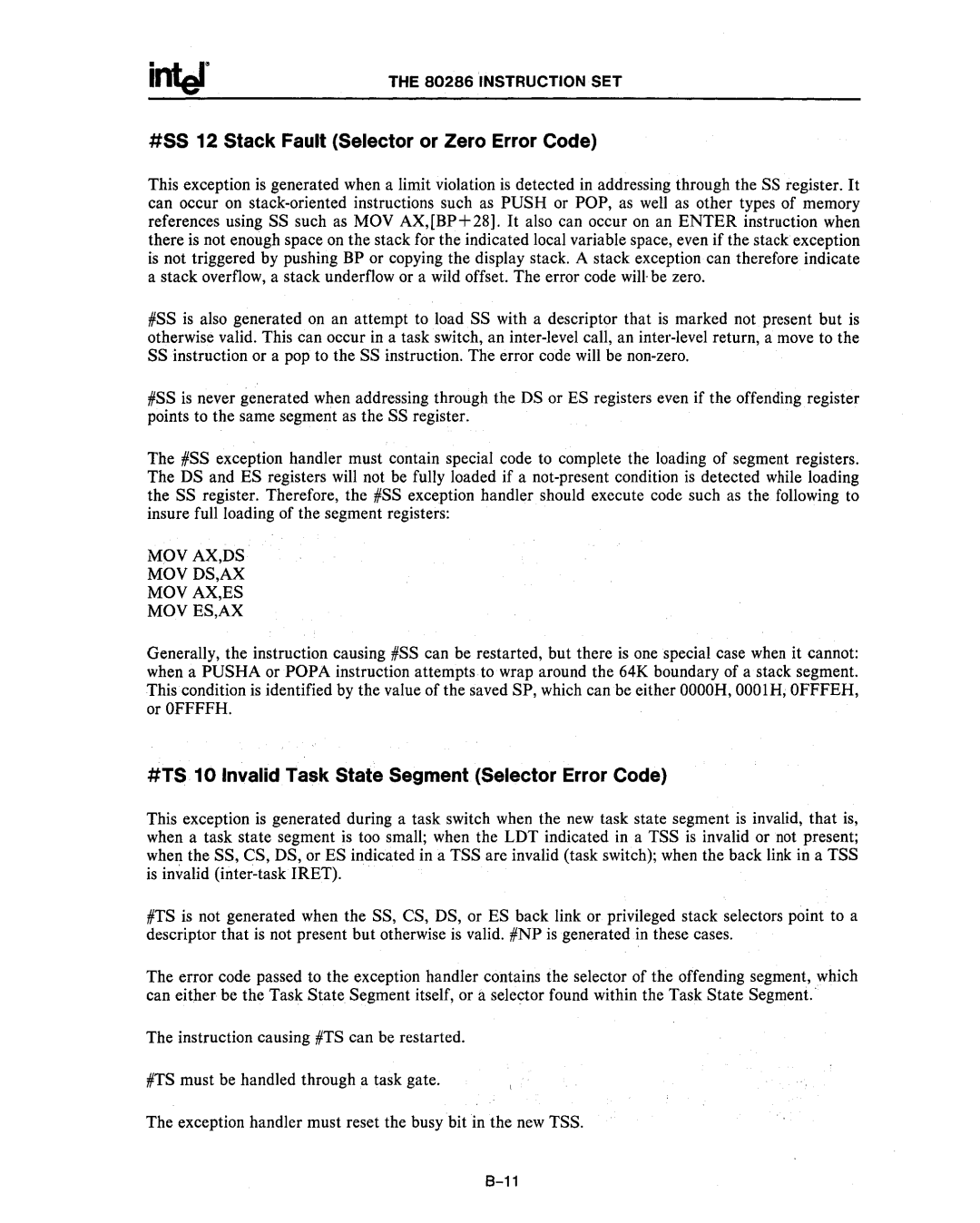
THE 80286 INSTRUCTION SET
#SS 12 Stack Fault (Selector or Zero Error Code)
This exception is generated when a limit violation is detected in addressing through the SS register. It can occur on
#SS is also generated on an attempt to load SS with a descriptor that is marked not present but is otherwise valid. This can occur in a task switch, an
#SS is never generated when addressing through the DS or ES registers even if the offending register points to the same segment as the SS register.
The #SS exception handler must contain special code to complete the loading of segment registers. The DS and ES registers will not be fully loaded if a
MOY AX,DS
MOYDS,AX
MOY AX,ES
MOYES,AX
Generally, the instruction causing #SS can be restarted, but there is one special case when it cannot: when a PUSHA orPOPA instruction attempts to wrap around the 64K boundary of a stack segment. This condition is identified by the value of the saved SP, which can be either OOOOH, OOOIH; OFFFEH, or OFFFFH.
#TS 10 Invalid Task State Segment (Selector Error Code)
This exception is generated during a task switch when the new task state segment is invalid, that is, when a task state segment is too small; when the LDT indicated in a TSS is invalid or not present; when the SS, CS, DS, or ES indicated ina TSS are invalid (task switch); when the back link in a TSS is invalid
#TS is not generated when the SS, CS, DS, or ES back link or privileged stack selectors point to a descriptor that is not present but otherwise is valid. #NP is generated in these cases.
The error code passed to the exception handler contains the selector of the offending segment, which caneitJIer be the Task State Segment itself, or it selector found within the Task State Segment.·
The instruction causing #TS can be restarted.
#TS must be handled through a task gate.
The exception handler must reset the busy bit in the new TSS.
